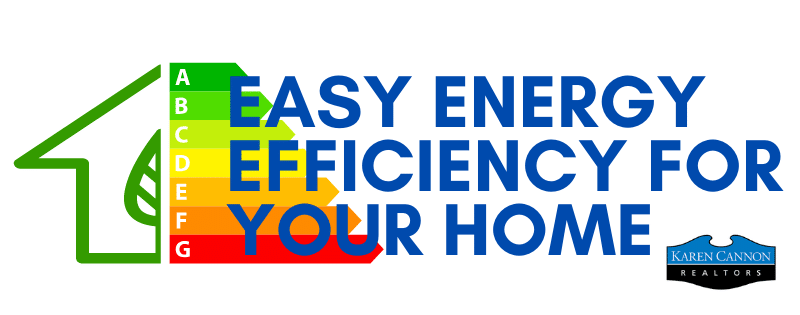April 22, 2020 will mark the 50th anniversary of Earth Day. Across the globe, countries are committing to climate protection. Similarly, many steps can be taken on a local level to reduce one’s carbon footprint. There are plenty of weekend projects that can be done with immediate ease or over the weekend. These projects can improve a home’s energy efficiency, reducing the carbon footprint and saving money.
Low Hanging Fruit
Start by replacing incandescent bulbs with compact fluorescent (CFL) bulbs. ENERGY STAR estimates CFL’s use 70-90% less energy and can save you $30-80 in energy bills over the bulb’s lifetime.
Touch your hot water heater. Is it warm to the touch? If the answers are yes you should add an insulating blanket to prevent heat loss. Just like insulating your walls or roof, insulating your hot water tank is an easy and inexpensive way to improve energy efficiency and save you money each month. A new tank is likely already insulated. An older hot water tank, check to see if it has insulation with an R-value of at least 24. If not, consider insulating your water tank, which could reduce standby heat losses by 25%–45% and save you about 7%–16% in water heating costs—and should pay for itself in about a year. You can find pre-cut jackets or blankets available from around $20. Some utility companies may even offer rebates for insulating the heater and don’t forget to add foam sleeves or insulating tape around hot water lines while you’re down there.
Most homes come standard with a programmable thermostat, but if not, a quick replacement will ensure you aren’t heating or cooling a house no one is in. Installing a programmable thermostat allows you to automatically adjust temperatures to minimize the amount of heating and cooling you need. Many products now allow you to control them remotely from your smartphone as well.
For the Weekend
Pay attention to your outlets as each outlet in your home allows a little treated air to escape into the walls. “For just 10 cents apiece you can put precut foam gaskets behind each outlet to stop leaks. Simply fit the gasket over the opening and replace the cover. For outlets along exterior walls (especially ones you don’t use often) consider adding a child-safety plug to completely block air exchange”
Consider installing exterior storm windows with Low-E coating. This installation is one of the most cost-effective solutions. They’re easy to install and cost a fraction of replacement windows. Low-E windows are coated with an ultra-thin, virtually invisible layer of metal that ‘reflect infrared heat back into the home. Therefore, this coating improves the window’s insulation ability, in turn lowering your heating and cooling costs. On average, low-e storm windows can save you 12%–33% in heating and cooling costs. This equates to $120–$330 in annual savings, assuming a $1,000 annual heating/cooling bill.’
Finally, in addition to replacing your lighting with CFL or LED bulbs, consider adding a programmable lighting system. Many programs can monitor energy use of outlets and switches and consumption is view-able via an app. In addition to saving money on utility bills, some insurance providers offer incentives for installing smart home devices.
In conclusion, as technology continues to evolve, opportunities present themselves to improve on the efficiency of your home. This will save money with lower energy use, but can also increase the value of your home. If you have questions on the types of adjusts and upgrades that can add value, contact Karen Cannon Realtors for suggestions.
energy.gov – cited source
